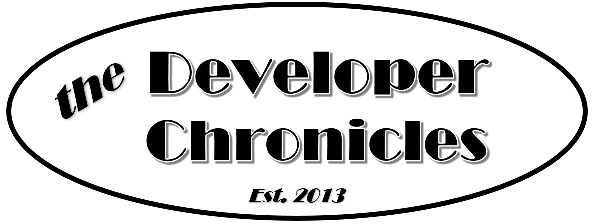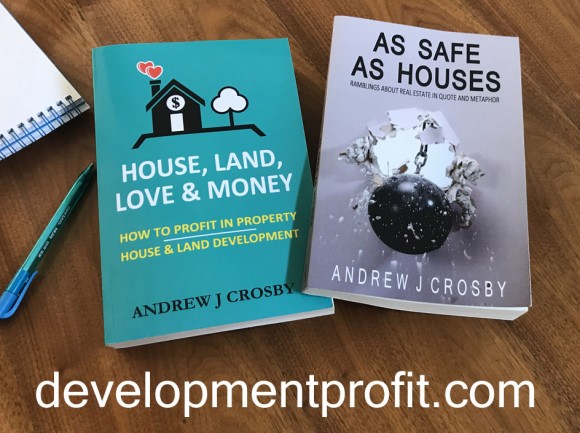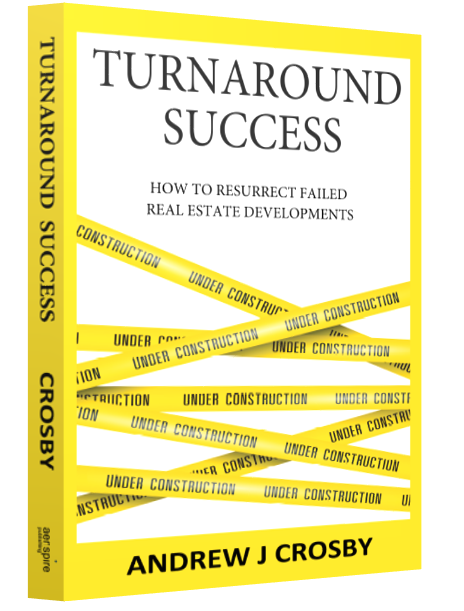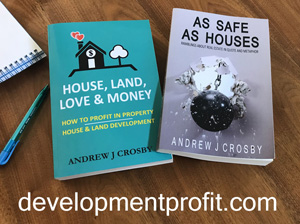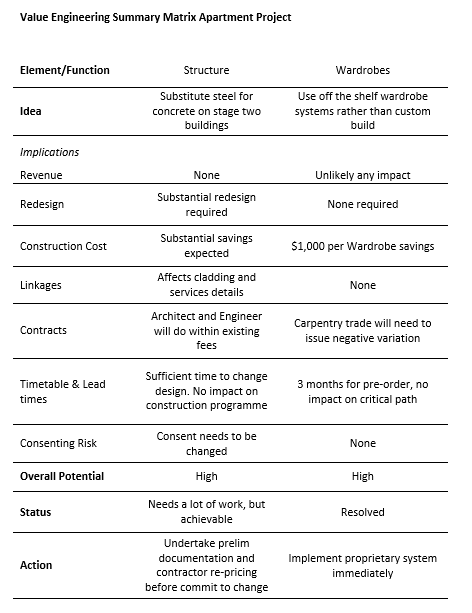I have just read The Startup Way by Eric Ries [http://www.thestartupway.com]. Eric discusses the MVP or Minimum Viable Product approach to Lean development. He quotes David Bland, a consultant and early Lean Startup evangelist “while you decide what’s minimum the customer decides if it’s viable.”
In a nutshell, rather than bet the family jewels on developing something that the consumer may never want, you release early, test customer response, refine, release again, test customer response until you get to a point where you persist or pivot.
Persist: because you are on the right track and you can take your product to higher levels of development growing your customer base.
Or Pivot: where customers have not shown suitable interest in what you developed, or where testing has identified a better/faster/more scalable or valuable approach and you change strategy to quickly build release and test again.
In both cases, persist or pivot, your vision doesn’t change. Think Netflix -who had the vision of delivering movies to customers cheaper and easier- pivoting from mailing DVD’s in the mail, to streaming online.
The book describes how the lean startup way is the opposite to the conventional corporate approach of plan, design, build and release. It is a much lower risk way to gauge product success. It’s all about experimenting with direct customer feedback until you get it right, and not being afraid to try and fail along the way. The approach is low(er) risk because you are not devoting years of resource and millions of dollars into a venture that may fail to gain customer traction and make a dime. You might have had a great internally generated forecast based on consumer focus groups and a whole heap of internal design and production based (biased) opinion but no real customer, hand in wallet, feedback.
And on forecasts, you know the ones many of us are guilty of, where vertical bars rise rhythmically into the future, their peaks forming a nicely sloping growth curve based on our leap of faith assumptions, Eric sets the standard corporate scene. “The fantasy plan of the original pitch is often far too optimistic to be used as a real forecast. But management lacking any other system to use, need something to hold onto. Without an alternative they cling to the forecast -even if it’s just made up.“
The lean startup way is to build the minimum, release as quickly and as inexpensively as possible to test these ‘leap of faith assumptions’. That way you can try lots of things, lot of times, experimenting in real-time with real customers. Failure won’t send you bankrupt because you are not relying on this one or nothing endeavor. And because you are not afraid of experimentation and failing here and there you’ll end up developing a much more customer focused product.
That’s what many do in Silicon valley, but (like almost everything) it got me thinking about property development.
Now its pretty difficult to release a small part of a housing development or office building project without fully committing to build it right? Well no. There is a well established approach that real estate developers have been applying for centuries that mimics a lean startup ‘customer experiment in production’ model to deliver profitable results. But it comes with plenty of fish hooks. Let’s delve into the development process to explain.
There are two times you can sell a development project: before construction starts and after construction starts.
From a sales and marketing point of view ‘after construction starts’ can be further broken down into ‘during construction’ and ‘post construction’. That’s because different sales and marketing techniques are required to sell something where the vision is physically coming into being versus it’s done and dusted and ready to show the customer in all its glory – warts and all. However, from everyone else in a developer’s organisations point of view it’s the same thing. The commitment to construction has been made, there is no going back, there’s not a lot you can change so you better now sell it!
Selling before construction starts is called pre-selling. You attempt to make pre-sales. If you sell everything you are pre-sold. You might be selling homes, lifestyle blocks, converted warehouses, leasing office space, or selling storage units. You are selling real estate using plans, images and specifications of what you promise the project will be. In essence you are selling the dream, without yet jumping into bed (with the builder).
Selling after construction starts is called spec-selling. You are speculating what you have started building will be sold. Whether your sales team waits until the final coat of paint is applied and the handrails are polished or they start as soon as the diggers arrive is moot. The commitment to construction has been made.
And in both cases you have a selling price, and a cost to build. Put a circle around each as we will come back to these later.
The start of construction is of course important, because that is when you have committed to spend the majority of the development costs of the project. You may even have been able to delay the commitment to purchase the land until you start building. But once construction starts there is no turning back. Sure there are design and planning costs spent (at risk) already and they may run into the millions, but that is nothing compared to the big ticket construction and the cost of land below it.
The speculative route is definitely not a lean start-up approach. You plan, design and build. You commit significant resources and money. It might be a two hundred home townhouse development, a thousand apartments or 100,000m2 office building. You start construction and then you start to sell. It is only then when you get the real customer feedback. However, except for minor cosmetic changes the horse has bolted. You have either gotten it right or will suffer the (price reducing) consequences. Sure you might have done the same type of project before, even dozens of times, so you believe you have plenty of ‘market research’. But real estate is different to cars, widgets or cell phones, in one key way: the land. That fixed, unbreakable, subject to all manner of unforeseeable externalities, locational quotient makes every project unique. The other thing that is important even if you have done a similar project time and time before is time itself. If there is one thing certain in real estate: markets change over time.
Take pre-selling though. Releasing, testing customer feedback, giving yourself an opportunity to improve and deciding to persist or pivot with your vision of the worlds next best property development is akin to a lean startup approach when you pre-sell. Yes pre-selling is property developments lean startup strategy.
When pre-selling you can test the market and real customer interest (the signing the cheque book type of interest) first before you commit to construction. If you are a serious deal maker of a developer with a patient land vendor you might have even negotiated buying the land dependent on how pre-sales go. Not enough and you walk away. In some countries, like New Zealand you can pre-sell with binding contracts. That means you can sign a buyer up on a sale and purchase agreement with nothing more than a salacious render, a floor plan and a one page outline specification. This is why it is also called ‘buying off the plan’. The developer is applying a lean startup approach. You can test your market to see if the buyers bite on your marketing. And the feedback is real, as they are putting down a real deposit and committing to closing the deal when the project is finally built.
In fact in Arizona, I first encountered the term ‘register for interest’ with regard to property developments. There developers would test the market using nothing but a basic web page with a price indication and maybe some hastily drawn plans. Enforcing a refundable $1000 or so was enough to get reasonably real customer feedback. Unless registrations were favorably brisk, the developer would can that idea and pivot immediately.
If customers bite real fast you have a real project. Now you can go get some money and start building. If they bite slowly, then you can persist to improve sales using different tactics, like changing the marketing pitch and images, modifying floor plans or revising the specification. If persistence isn’t working then you can decide to pivot the project. Apartments becomes a retirement village. Luxury homes becomes affordable townhouses. But your vision of a great property development still remains in tact. And you have really learnt from the market in the process.
Yes a spec development can be changed after it is built. Apartments can become a serviced apartment hotel. Office for lease can becomes office condos for sale. Large industrial warehouses can be cut up. But it will be painful and cost a lot of money in retrospect and probably never really suit the target market.
If the customers don’t bite at all, then you can ditch the project for a brighter day, or liquidate costs incurred to date to fight another day. If you have already built a spec development and the customers aren’t biting, it is going to get financially a lot more painful.
There are also three benefits enticing buyers to purchase off the plan. One, if the developer lets them, they can customise interior finishes and make adjustments to layouts. Two, they get the opportunity to buy into a project, or their preferred location in that project before others (the ones who wait until it is complete, who indeed could miss out). And three, they are the beneficiary of price rises between the day the contract is signed and when they take possession. For an apartment/condo project this could be two or more years. In a hot market buyers fear of missing out can sell out projects in days. I recall one project we did where about 100 apartments were sold out in the time 100 contracts could pass through the fax machine (about a weekend of constant faxing!).
So why -with this already experimental leading edge lean startup methodology- doesn’t every real estate developer take the pre-sale approach?
Well it all comes down to risk. And not for the reasons you might think.
Go back in this article and take those two items I told you to circle. They now come into play. When you pre-sell a development project you are in effect locking in your sales price. Now you have to build at a cost where the pre-agreed sales price allows you to pay for construction and all the other costs like design and financing and still make a development margin – your profit, your payday. When you start pre-selling, assuming you know what you’re doing and have a good handle on costs that should not be a problem. But even if you sell out quickly, the time it takes to secure all the necessary consents (and you might have started selling well before even achieving a basic planning permission) and a construction contract (or subcontracts if you are building yourself) can be long. The bigger and more complex the development, typically the longer it takes. But even small projects can have monumental external hiccups that incur substantial delays. During the delay the construction cost can go up. If it goes up enough, there goes your margin!
Unless your project is remarkably unique and awaking a dormant buyer pool, selling out fast typically indicates a buoyant appreciating real estate market. If that is the case soon, as it always does will follow an appreciating construction market. That’s when costs can escalate dramatically. Time is not the pre-selling developers friend in these circumstances. When you have pre-sold, you have fixed your revenue and every day you take to fix your construction price (and that is never really fixed until the day construction is completed) could mean another day of eroding margins.
OK so pre-selling has its downfall, but can’t you just a pre-sell a few, that will test the market and hold the rest whilst prices rise?
Yes and no. Once again it comes down to money – this time how much you as the developer have. If you are cashed up you can choose this strategy. If banks are falling over themselves to lend to you because your balance sheet emulates one of a small oil producing nation then you can go down this route. But for most private developers, if you want to develop the bank will want pre-sales to cover their risk before they will lend you funds (at least at an affordable interest rate). They will want you to ‘show them the sales.’They will also want a fixed price construction contract. That is why so many development projects, even in boom times, even when fully sold out, and endorsed by celebrities never get built. The developer has fixed their revenue too early and cannot get it built cheap enough to leave a margin or satisfy their bank manager. And as time goes on it gets harder. Early in the cycle banks may only require 30, 40 or 50% of the product to be pre-sold. By the end it can easily be 100% of the funding or even 100% of the units.
The spec developer by definition is counting on sales prices to continue to rise whilst they arrange construction and start building right up until the day they choose to start selling (and even then they might stagger listings it to take full advantage of a rising market). And because they don’t sell until after they have started construction, they have a good idea of their costs (incompetent management or unforeseen disaster excluded) so can price to cover costs and maximize their margin. As long as sale prices are going up faster than construction costs they are increasingly in the black.
Rare is the situation where sales prices are going up and construction costs are going down – every developers dream. Unfortunately, all too common at the end of a property cycle, it’s the opposite, sales prices are going down and costs are going up, that can hit the spec developer harder. The benefit to a pre-sales no-go funding valve is that you don’t build a project (at least with the banks money) to find out there are no buyers and have to take a substantial haircut.
OK but some spec builders who have the funds -to pre-sell and test the market before they commit- don’t even do that. Why not?
Well that’s where Eric’s book comes into play again. This is typical of the large corporates. The ones who have a production mindset first and an experimental sales mentality much further down the priority list. Pre-sales is all about sales first, worry about construction later. Spec is all about build it now, build it and they will come, build it and then we worry about selling. The large companies take a lot longer to feel the pain. Their balance sheets on the face of it can absorb a lot, until one day they can’t. To them selling off the plan is leaving money on the table and putting their margin at risk. When times are good and property is selling they are willing to risk getting it built first then worry about the customer later.
And pre-sales can deter buyers anyway. Just because pre-sales doesn’t work doesn’t mean the project wont eventually have buyers. Some buyers will be skeptical that the project wont get off the ground. They stay out of the market until they see concrete trucks and carpenters. Others have concerns about the quality the developer is promising. Or they don’t want to be subject to the threat of facing price rise requests from a developer in trouble and being stuck in a contract waiting for years for their property to be finished as delay after delay ensues. Other buyers can’t imagine an avocado from guacamole so they aren’t in the market until the property is built and they can see and feel what they are buying. The buyer has plenty to worry about when pre-buying. And all for very good reason as this article sums up https://propertyupdate.com.au/buying-off-the-plan/.
But when the market turns, the spec developer can be caught out, whereas the pre-sale developer never made it past the starting gate in the first place. That’s when the no sale is better than a (negative margin) post-sale.
So what does a developer do then if they do have a choice to pre-sell or not and the market has changed?
That’s what our team will be debating in the upcoming weeks.
Cheers
Andrew Crosby
www.developmentprofit.com
www.developmentrisk.com
Read more about pre-sales and real estate development in House, Land, Love & Money and Turnaround Success.
